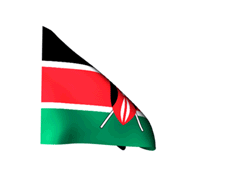SUPREME COURT HOLDS THAT VICTIMS OF HUMAN RIGHTS VIOLATIONS HAVE A RIGHT TO THE CCTV FOOTAGE OF INTERROGATION

The Three Judge Bench of the Hon’ble Supreme Court of India comprising of Justices R.F. Nariman, K.M. Joseph and Aniruddha Bose passed a Judgment dated 02.12.2020 in the case of Paramvir Singh Saini v. Baljeet Singh & Others (Special Leave Petition (Criminal) No. 3543 of 2020) and held that victims of Human Rights Violations have a right to the CCTV Footage of Interrogation.
In 2018, the Apex Court had passed a direction for the constitution of Central Oversight Body (COB) by the Ministry of Home Affairs to regulate the use of video recorded in a crime scene during the investigation. The Court directed that COB may issue appropriate directions in this respect. The Supreme Court while considering another matter D.K. Basu Vs. State of West Bengal & Others (2015) 8 SCC 744, held that there was a need for further directions that in every State an oversight mechanism must be created whereby an independent committee can study the CCTV camera footages and periodically publish a report of its observations thereon. The COB was further directed to issue appropriate instructions in this regard at the earliest.
In the present case, a Special Leave Petition was filed by one Paramvir Singh Saini which raised questions on the video-audio recording of the statements and the installation of CCTV cameras in Police Station. The Apex Court vide Order dated 16.07.2020 had issued a notice in the instant SLP to the Ministry of Home Affairs on the question of audio-video recordings of Section 161 CrPC Statements as provided by proviso to Section 161 (3) and on the installation of CCTV cameras in Police Station. The Court vide Order dated 16.09.2020 asked the States and the Union Territories to submit a report on the exact position of the CCTV cameras in each Police Station and also on the constitution of Oversight Committees.
In furtherance of these directions, Compliance Affidavits and Action Taken Reports were filed by 14 States; however, they failed to disclose the exact position of CCTV cameras and details of the Oversight Committees that have been already constituted in the States and Union Territory.
Taking note of the situation and in furtherance of the Fundamental Rights guaranteed under Article 21 of the Constitution of India, the Hon’ble Supreme Court passed the following directions:
- Oversight Committees to be constituted at State and District Levels.
(a) The State Level Oversight Committee (SLOC) must consist of:
- The Secretary/Additional Secretary, Home Department;
- Secretary/ Additional Secretary, Finance Department;
- The Director-General/Inspector General of Police; and
- The Chairperson/member of the State Women’s Commission
(b) The District Level Oversight Committee (DLOC) should comprise of:
- The Divisional Commissioner/ Commissioner of Divisions/ Regional Commissioner/ Revenue Commissioner Division of the District (by whatever name called);
- The District Magistrate of the District;
- A Superintendent of Police of that District; and
- A mayor of a municipality within the District/ a Head of the Zilla Panchayat in rural areas.
2. The working, maintenance and recording of CCTVs shall be the duty of the SHO of the concerned police station. In case of any fault with the equipment or malfunctioning of CCTVs, it shall be the duty of the SHO to immediately report to the DLOC. If the CCTVs are not functioning in a police station then it shall be the duty of the SHO to inform the DLOC about the arrest/interrogations carried out during that period and to forward the recording to the DLOC. If the SHO of a police station reports about the non-functioning of CCTVs, it shall be the duty of the DLOC to inform the SLOC about the repair and purchase of the equipment, which shall be done immediately.
3. It shall be the duty of the SHO to maintain the CCTV data, backup of data, rectification of fault etc.
4. It shall be the duty of the State and Union Governments to ensure that CCTV cameras are installed at all entry and exit points; main gate of the police station; all lock –ups; all corridors; lobby/the reception area; all verandas/outhouses; Inspector’s room; Sub-Inspector’s room; areas outside the lock-up room; station hall; in front of the police station compound; outside (not inside) washroom’s toilets; back part of every Police Station.
5. The CCTV systems must be equipped with night vision and must consist of audio and video footage.
6. The Union of India has to file an Affidavit updating the Court on the constitution and workings of the Central Oversight Body. Additionally, it shall be the duty of the Union of India to compulsorily install CCTV cameras and recording equipment in the offices of:
- Central Bureau of Investigation (CBI)
- National Investigation Agency (NIA)
- Enforcement Directorate (ED)
- Narcotics Control Bureau (NCB)
- Department of Revenue Intelligence (DRI)
- Serious Fraud Investigation Office (SFIO)
- Any other agency carrying out investigations and having the power to arrest.
7. The SLOC and the COB shall give directions to all the Police Stations and investigative/enforcement agencies to display in English, Hindi and Vernacular language about the coverage of the concerned premises by CCTV.
8. Furthermore, it must be clearly mentioned that in case of any violations of Human Rights, a person has a right to complain to the National/State Human Rights Commission, Human Rights Court or the Superintendent of Police or any other Authority having the power to take cognizance of an Offence. The CCTV footage shall be preserved for a period of not less than six months and the victim shall have a right to the CCTV footage in the event of any Human Rights violations.
Suchitra Upadhyay
Associate
The Indian Lawyer & Allied Services




































Leave a Reply